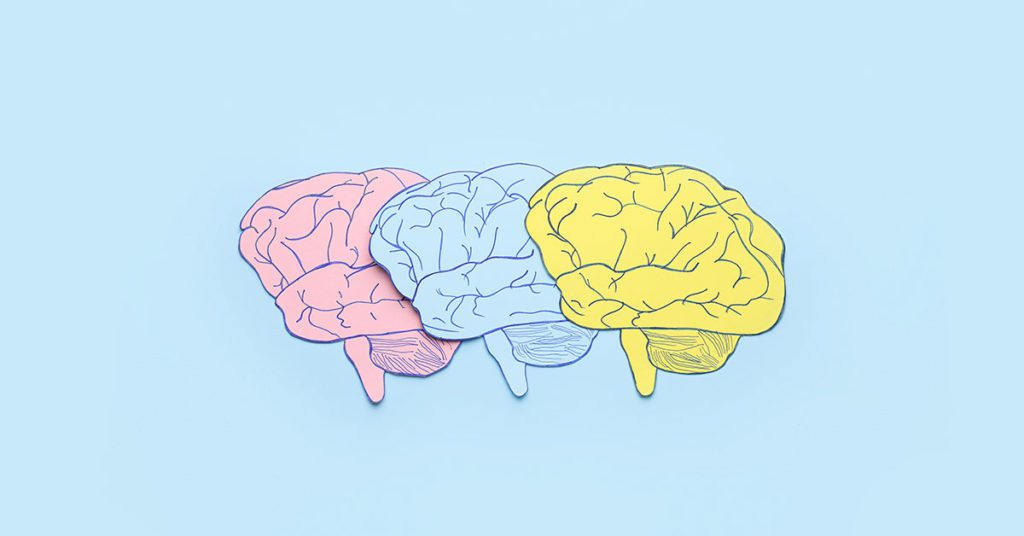It’s late and you need to go to bed at a reasonable hour. What are some methods you’ve tried to try to fall asleep? You may have tried the traditionally mentioned technique of visualizing sheep and counting them in your mind’s eye. For someone with aphantasia, that is not an easy undertaking. They are typically unable to visualize mental imagery even when closing their eyes.
Some might describe it as being face blind since they cannot see faces in their mind’s eye and may in some rare cases have trouble recognizing even their own face.
When someone with this condition tries to imagine something, they instead draw up blind spots in their mind’s eye. They may be able to factually recall descriptions of places and recollections, but they would be without visualizations of images.
Aphantasia: Memory Without Mental Images
According to Professor Zeman, a professor of cognitive and behavioral neurology, how we imagine is clearly very subjective—one person’s vivid scene could be another’s grainy picture—and that aphantasia is “not a disorder” but instead a life without mental images, How rare is aphantasia? This different way of processing the world may affect up to one in 50 people (about 4-5% of the population).
Francis Galton discovered aphantasia in 1880, but it was not until 2015 that more study into aphantasia occurred. There are two types: acquired aphantasia and congenital aphantasia. A study in 2015 delved further into the phenomenon of aphantasia and has led to renewed research interest.
Visual imagery, the ability to imagine with the mind’s eye, plays an important role in essential cognitive processes like episodic memory and dreaming. Although there may be a link between aphantasia and poor memory, aphantasia does not seem to diminish creativity.
Types of Aphantasia
The ability to visualize has extreme variations, ranging from completely absent (aphantasia) to photo-like (hyperphantasia). It can exist on a spectrum, with varying degrees of little to moderate visual imagery.
Acquired Aphantasia
Acquired aphantasia typically results after sustaining a head injury or after a duration of depression.
Congenital Aphantasia
Congenital aphantasia occurs at birth and it is a life without visual imagery.
Hyperphantasia
Hyperphantasia is the direct opposite of aphantasia. It is a condition of high imagination on an extreme, almost photographic-memory level. It is the capacity to vividly visualize with bright imagery. With this type of mega-imagination, it may even be possible to experience a 360-degree perspective on objects and see them from varying directions.
Cognitive Brain Test for Aphantasia
The Aphantasia Network has a cognitive brain test you can take to see how well you see with your mind’s eye: The Vividness of Visual Imagery Questionnaire (VVIQ). The following scoring is on a scale of 1 to 5. The scoring lies between one—a very powerful mind’s eye—and five—an obviously missing mind’s eye. Average scores are between two and 2.5.
VVIQ Rating Scale
- No image at all, with the “knowing” awareness they are thinking of the object
- Dim and vague image
- Moderately realistic and vivid
- Realistic and reasonably vivid
- Perfectly realistic, as vivid as real seeing
British psychologist, David Marks originally created the VVIQ test for aphantasia in 1973. This assessment has been referenced in over 1200 studies of mental imagery and has received increasing attention, most recently within cognitive neuroscience. This is a visual imagery test with a valid and reliable self-reported measure.
Is aphantasia on a spectrum? The test for aphantasia indicates that aphantasia does exist on a spectrum. Some report a complete inability to visualize images, while others have some degree of visual imagination.
Aphasia
Those diagnosed with Alzheimer’s may show signs of aphasia, which is the incapacity to use or understand words properly. This can create language and communication difficulties, as they encounter difficulties in finding the right words.
Should an individual have both aphantasia and aphasia, this could create difficulty in communication. It is helpful to become aware of the signs of this condition to better understand and be supportive of those who have it.
Restful Sleep and Memory
But do those with aphantasia dream? They still dream, but they are different from those with more visualization capabilities. The vividness of dreams can vary from person to person.
While reported aphantasia treatment exists at this time, we can protect our mental health by ensuring that we are getting enough restful sleep. By committing to regular healthy habits, we can help maintain and support our brain health. Take vitamins for brain health to maintain long-term cognition. Participating in memory improvement games are also great ways to keep our brains and memory sharp.





